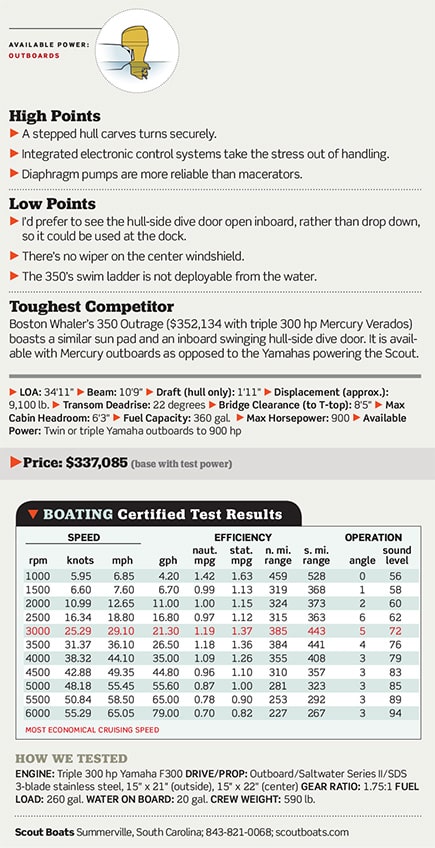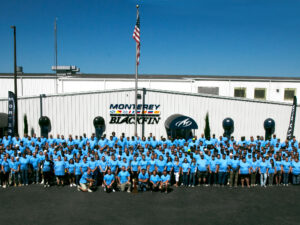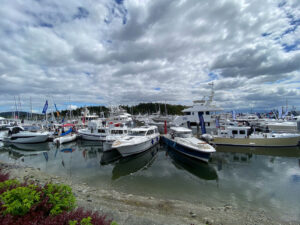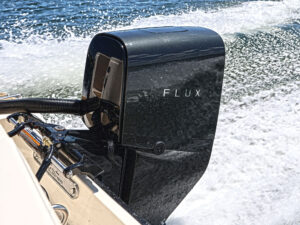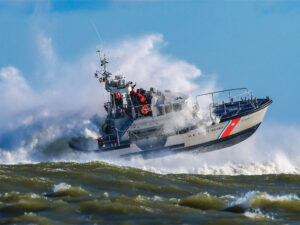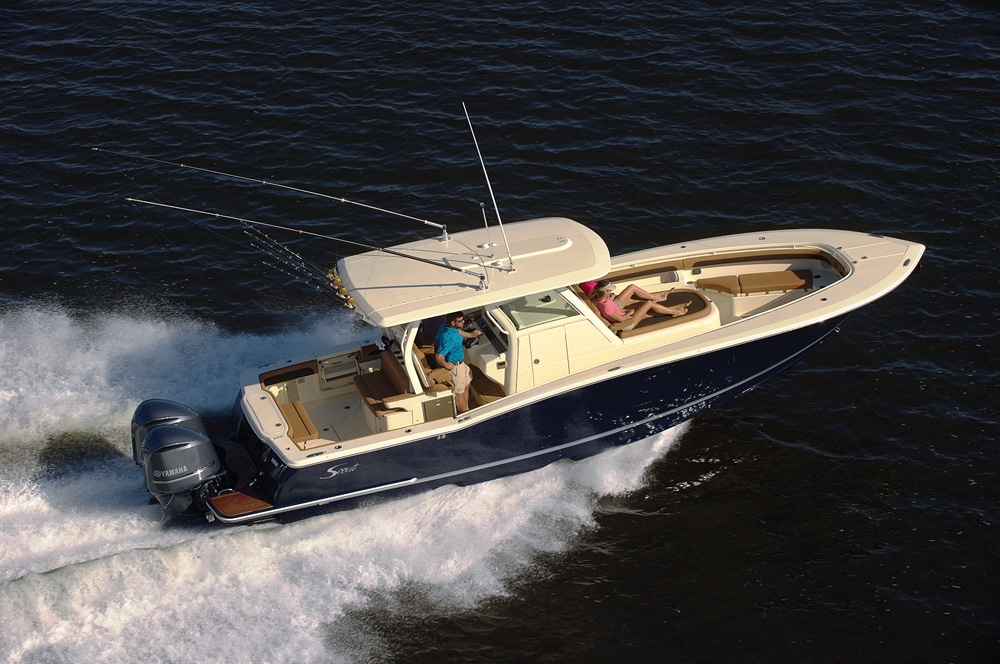
Scout 350 LXF
Beam: 10’9″
Draft (hull only): 1’11”
Displacement (approx.): 9,100 lb.
Transom Deadrise: 22 degrees
Bridge Clearance (to T-top): 8’5″
Max Cabin Headroom: 6’3″
Fuel Capacity: 360 gal.
Max Horsepower: 900
Available Power: Twin or triple Yamaha outboards to 900 hp
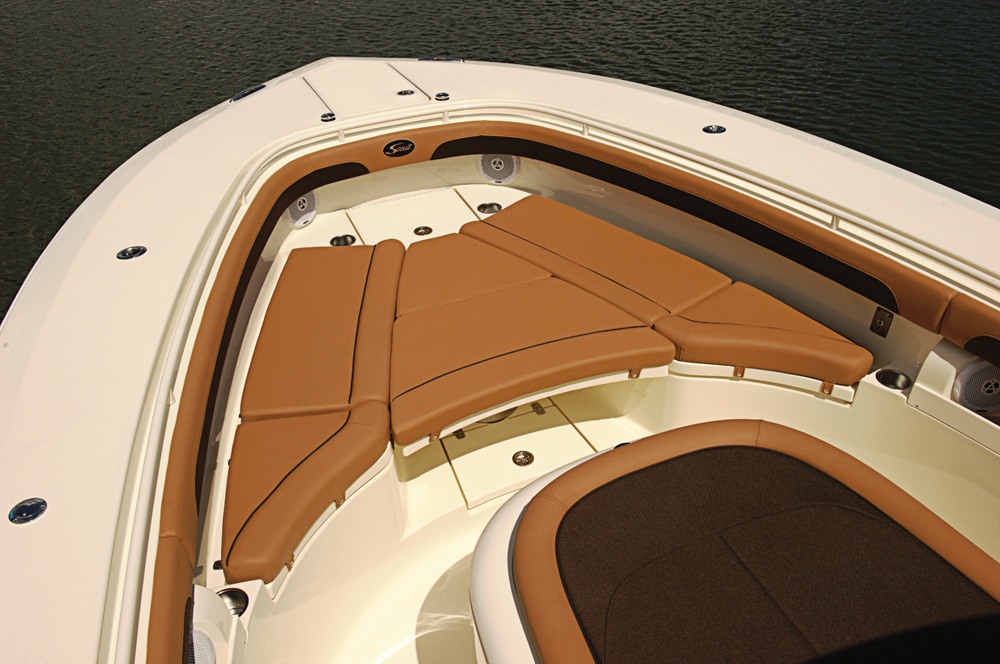
Scout 350 LXF
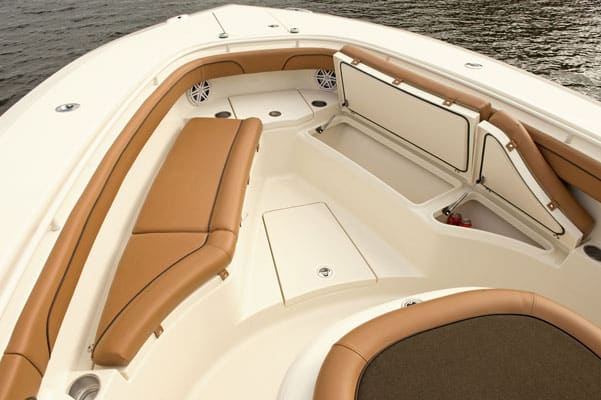
Scout 350 LXF
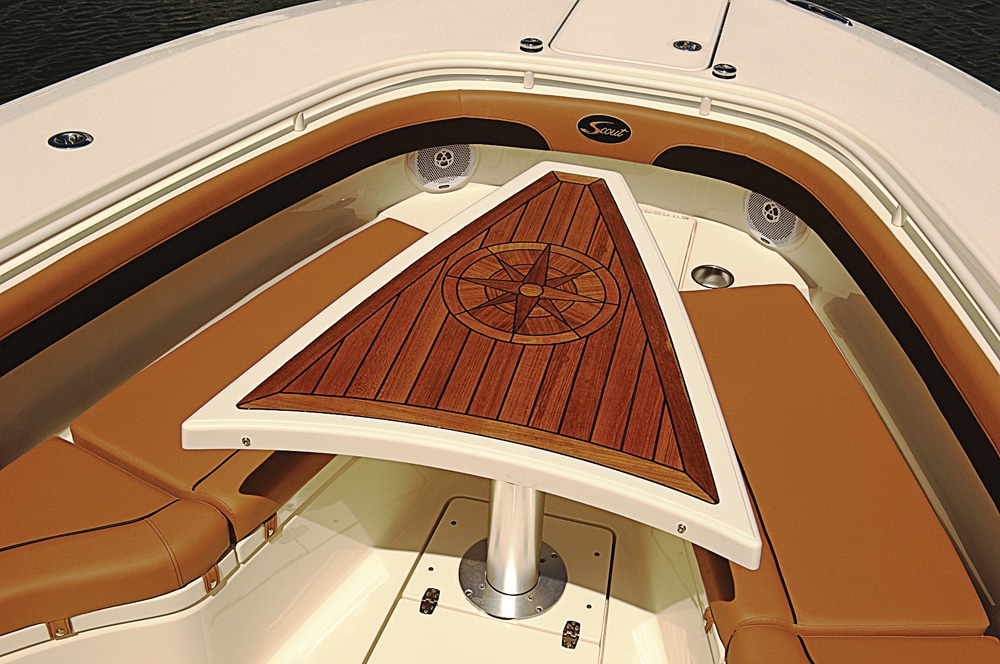
Scout 350 LXF
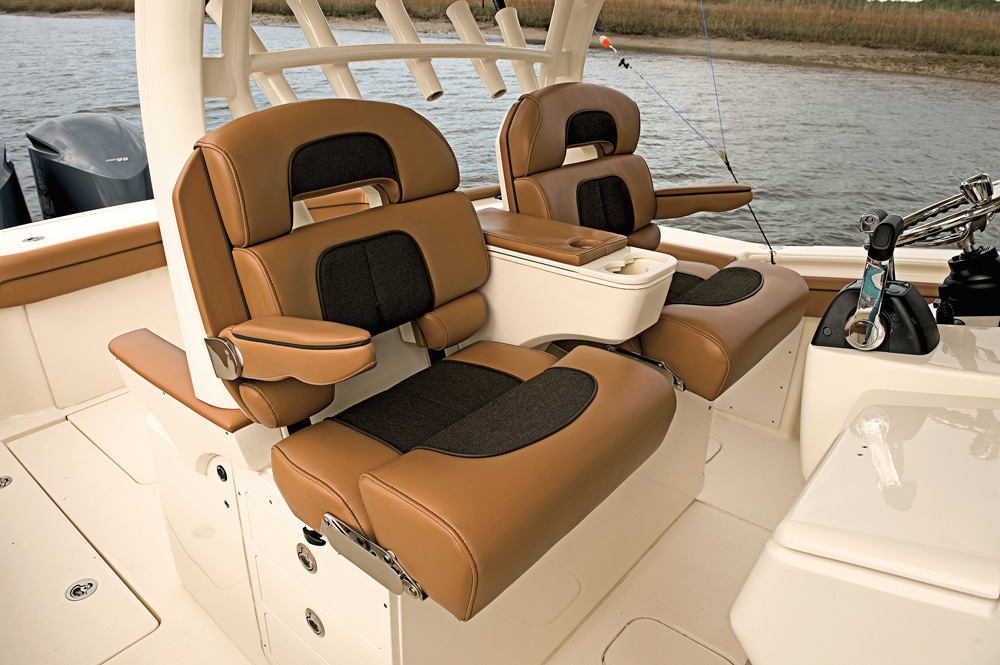
Scout 350 LXF
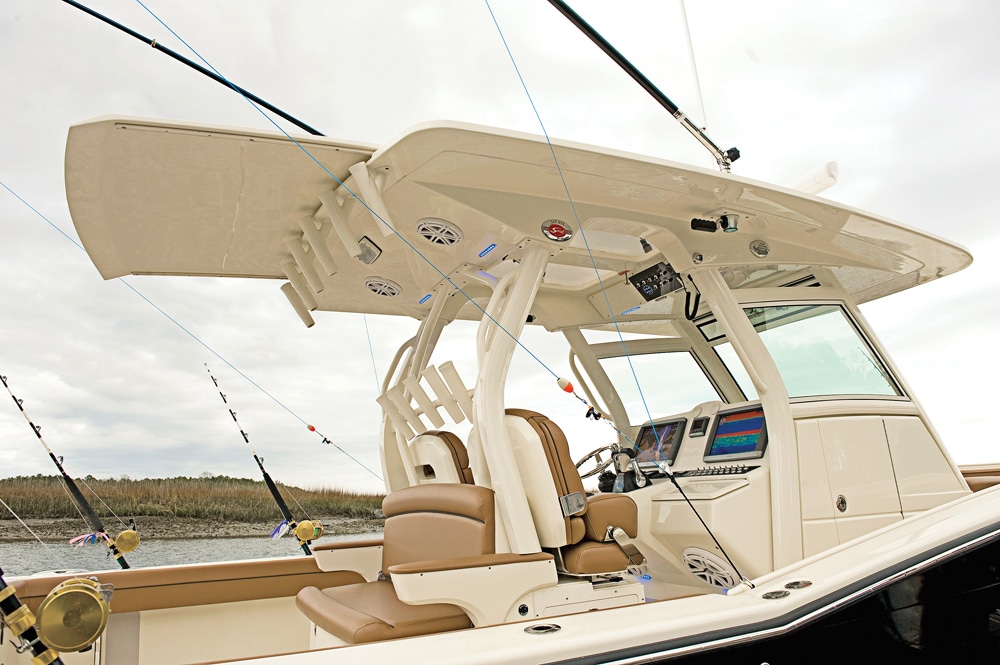
Scout 350 LXF
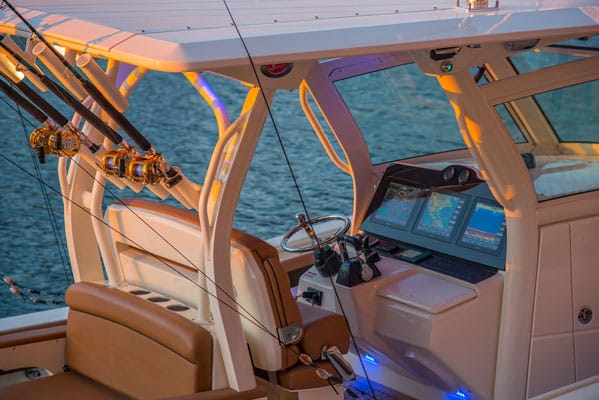
Scout 350 LXF
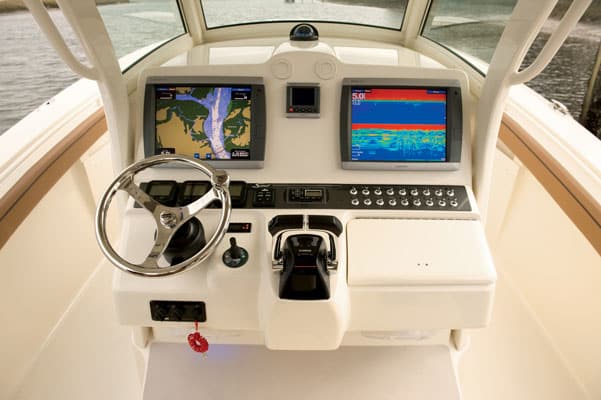
Scout 350 LXF
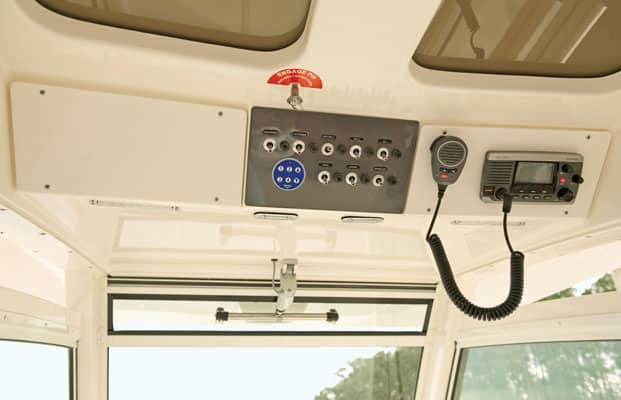
Scout 350 LXF
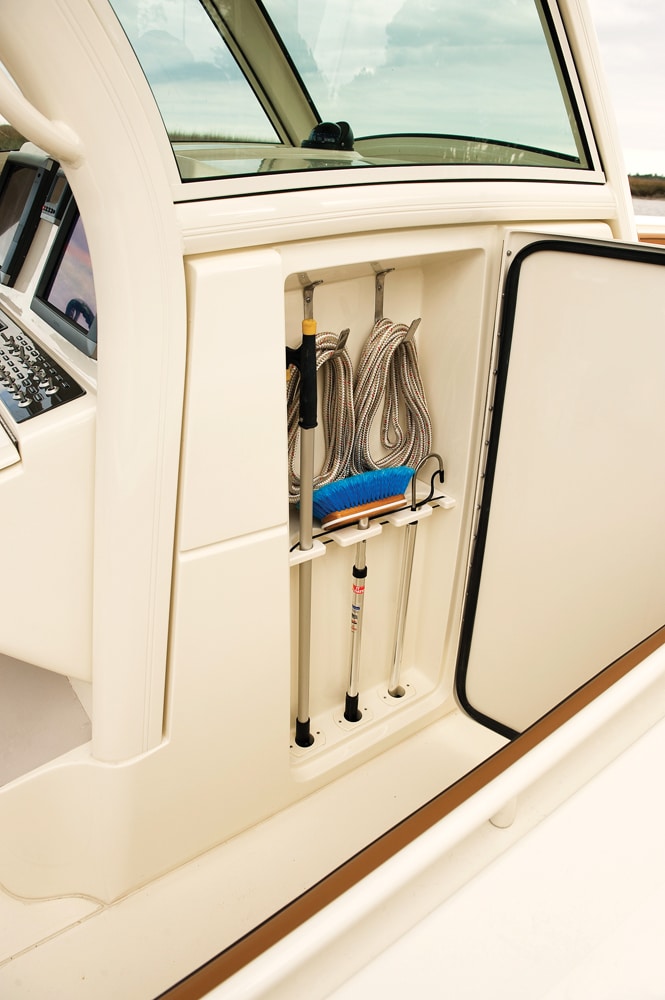
Scout 350 LXF
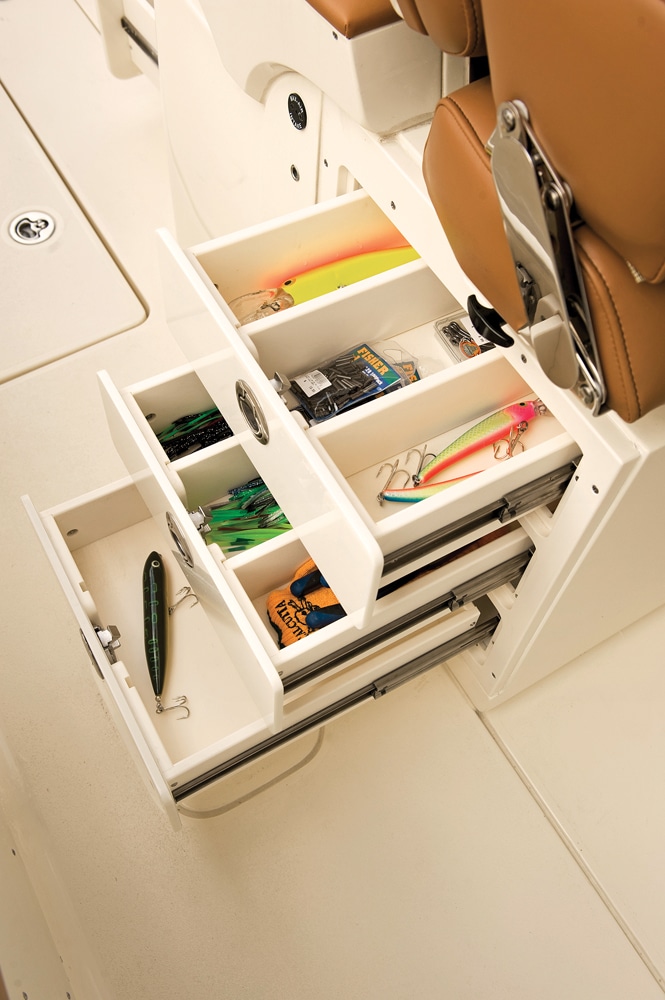
Scout 350 LXF
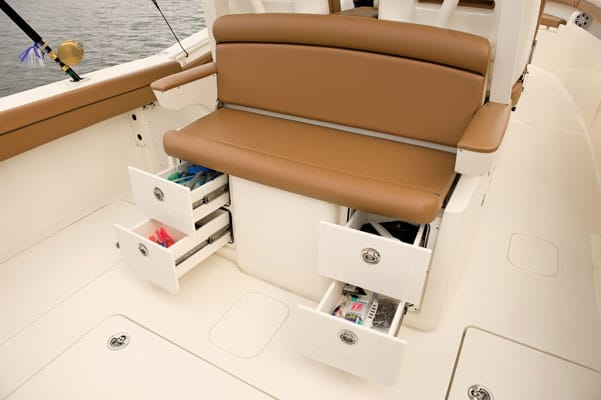
Scout 350 LXF
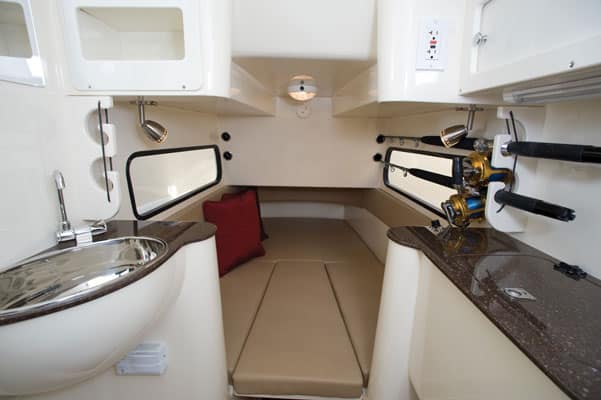
Scout 350 LXF
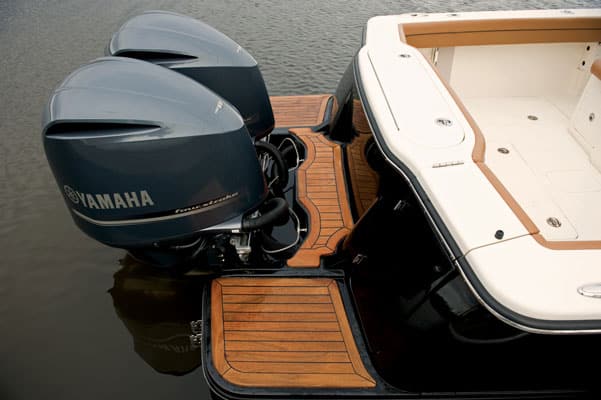
Scout 350 LXF
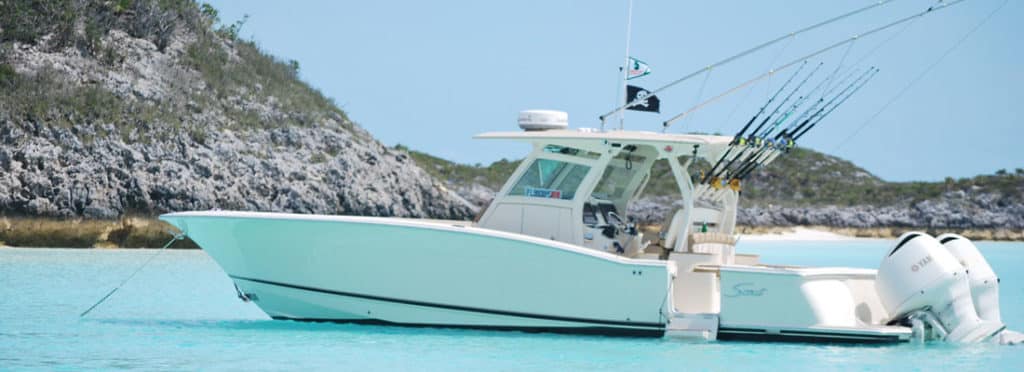
Scout 350 LXF
I tested Scout’s 350 LXF in pouring rain, on a cold, blowy day. Close-together seas of 2 feet greeted us along the beach. What better way to test a boat’s true mettle?
A completely fly-by-wire system controls the triple Yamaha F300 outboards, making them incredibly responsive. In addition to Yamaha’s CommandLink electronic throttle and shift, Scout incorporated the Optimus steering system as standard. Optimus provides adjustable steering response according to speed: At 2,200 rpm and less it takes 3½ turns lock-to-lock with 30 percent effort. At 5,500 rpm, that changes to 70 percent effort and 6½ turns lock-to-lock. Response follows a parabolic curve between 2,200 and 5,000 rpm. Interestingly, you never consciously notice the change. The system also provides more accurate control of the Garmin nav system and autopilot, which in this instance consist of three 12-inch displays, effectively providing more viewing area than two 15-inchers.
My test boat also sported an optional Vetus docking system consisting of electric bow and stern thrusters. It works very much like joystick controls in that you can spin the boat on its axis, slide it sideways and move it diagonally (with the help of the outboards).
While many stepped hulls don’t carve sharp turns well, Scout’s 350 LXF presents an exception. Scout builds this hull of hand-laid fiberglass. A unique solid-fiberglass sunshade extends from the T-top at the press of a button to cover much of the cockpit. Also in the cockpit, you’ll find two aerating/recirculating baitwells — one in the helm module and one in the transom — and two mirror-image insulated fish boxes with diaphragm pumps rather than macerators.
A big sun pad with storage beneath resides on the front side of the console. Between the forward seats is a lovely inlaid teak floor that rises on an electric ram to seat height for added sunbathing or casting space, then continues upward to fill the all-important cocktail table requirement.
Comparable model: Boston Whaler 350 Outrage
